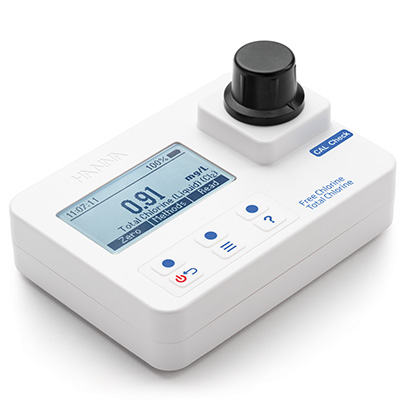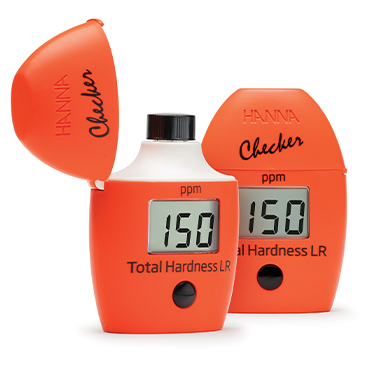Water is very important ingredient in the dough formation for baking products. Very often, the tap water is used in the industries to make the dough. From a technical stand of view, water quality will have direct effects on dough and final product characteristics. Some factors have to be considered in relation to water quality. They are taste, content of chemicals and mineral content.
Unusual taste or odor of the water can change the taste of the final product.
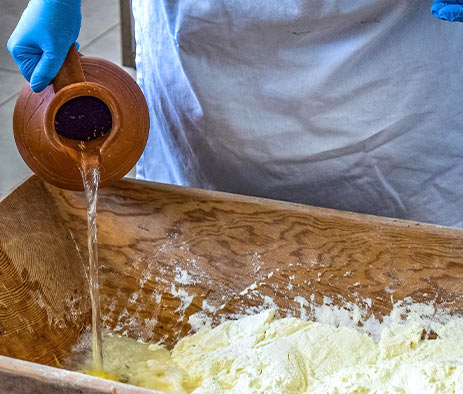

Chlorine
Chlorine has significant effects on the quality of pulp, especially in fermentation activity. Yeast can be sensitive to too high concentration of chlorine. Also a high level of chlorine affects the function of flour and in particular the enzymes. The use of chlorinated water is noticed that provokes a reduction of the fermentation time and improves the quality of bread, particularly if used weak flour. Influence of chlorine can change if it is found or as combined chlorine residual in the water sterilization treatment.
For measuring free and total chlorine in the water Hanna Instruments has easy solution!
HI97711
Free and Total Chlorine Portable Photometer
The HI97711 Free and Total Chlorine Photometer combines accuracy and ease of use in a simple, portable design. The advanced optical system provides lab-quality accuracy while its user-friendly design is easy for any user making it the perfect photometer for your water quality testing needs. The HI97711 meter measures free and total chlorine in water samples from 0.00 to 5.00 mg/L (ppm).
- No warm up time needed before taking a measurement.
- Tutorial mode for easy step-by-step instructions.
- Uses either powder or cost saving liquid reagents.


Mineral content
Mineral content of the water determines the hardness and soft-ness of the water, where strong water contains a large amount of minerals, while soft water contains a very limited amount of minerals. Dough characteristics may be affected by the content of minerals in the water: minerals are used by the yeast nutrient, so a change in their concentration affects the fermentation process. Consequently, a change in fermentation will affect the characteristics of the dough, making it stronger or weaker.
Water can be classified according to its calcium and magnesium content as:
Hard:
high mineral content
above 100 ppm.
It strengthens the dough
and increases the fermentation rate.
above 100 ppm.
It strengthens the dough
and increases the fermentation rate.
Medium hard:
medium mineral content between 50-100 ppm.. Best suited for baking.
Soft:
low mineral content. It produces sticky, soft and slack dough and decreases fermentation rate. Yeast-leavened products may require addition of nutrients to improve fermentation.
How to measure water hardness?
There are several methods available, from fast checking test kits, photometers to titration systems.
HANNA has developed a new “easy-to-use” solution for testing as an alternative to chemical test kits.
HI735
Hardness

Low Range Checker
Features at-a-glance:
- Easier to use and more accurate than chemical test kits
- Dedicated to a single parameter
- Small size, big convenience
Ideal for: Drinking and process water, heating and cooling systems, swimming pools and spas, food industry.
The HI735 Checker®HC (Handheld Colorimeter) is a simple, accurate, and cost effective way to measure total hardness. Designed as a more accurate alternative to chemical test kits, the HI735 provides quick, accurate results in a few easy steps.
Our Total Hardness Low Range handheld checker offers you a middle ground between advanced instrumentation and your typical chemical test kit. Standard test kits have limited accuracy since they rely upon the human eye to match colors. Our handheld colorimeter eliminates the hassle of matching to a color chart by providing a direct Total Hardness Low Range result digitally.
Our Total Hardness Low Range handheld checker offers you a middle ground between advanced instrumentation and your typical chemical test kit. Standard test kits have limited accuracy since they rely upon the human eye to match colors. Our handheld colorimeter eliminates the hassle of matching to a color chart by providing a direct Total Hardness Low Range result digitally.
- Range: 0 to 350 ppm (mg/L) as CaCO₃
- Get simple results with easy one-button operation.
- Don’t waste time matching to a color chart anymore, get direct results quickly.
HI97735
Total Hardness
Portable Photometer
Portable Photometer
The HI97735 Total Hardness Photometer combines accuracy and ease of use in a simple, portable design. The advanced optical system provides lab-quality accuracy while its user-friendly design is easy for any user making it the perfect photometer for your water quality testing needs. The HI97735 meter measures total hardness in water samples up to 750 mg/L (ppm) CaCO3.
- No warm up time needed before taking a measurement.
- Tutorial mode for easy step-by-step instructions.
- CAL Check for performance verification and calibration
Easy navigation between chemical forms with a press-of- a-button:
- mg/L (ppm)
- French degrees (°f)
- German degrees (°dH)
- English degrees (°E)

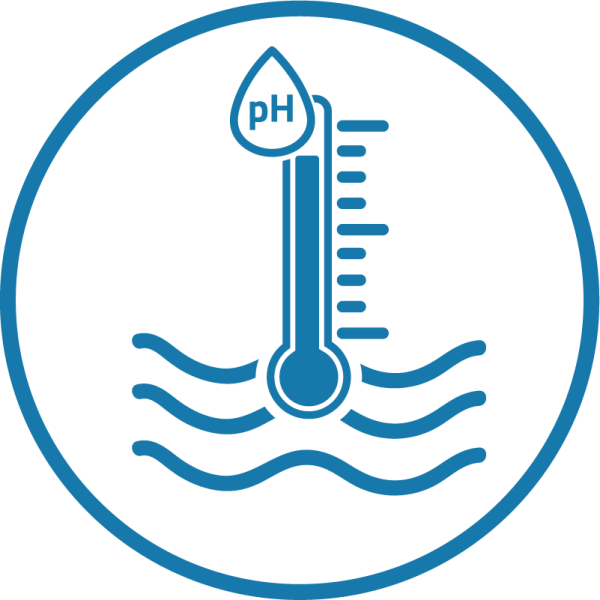
pH
Another indicator of the analytical water, which retains its importance by bread making technological side, is pH since for an optimal development of its value dough should be 5 – 6. The use of alkaline water (pH > 7.5) enables the production of a dough with pH higher than 6, causing a poor manufacturing gas and a longer baking time due to reduced activity of the yeast, and diastazës lactic bacteria. Alkaline water has a negative effect on gluten to form and its plasticity: it is therefore necessary to use water with a slight acidity.
For measuring pH values in bread and dough and water used in process Hanna has specialized electrode for this application.
HI98161
Professional Foodcare
Portable pH Meter
Portable pH Meter
The HI98161 is a rugged, waterproof, portable pH meter that measures pH and temperature using the specialized FC2023 Foodcare pH electrode. This professional, waterproof meter complies with IP67 standards. The HI98161 is supplied with all necessary accessories to perform a pH/temperature measurement packaged into a durable thermoformed carrying case that holds the meters, probes and calibration buffers securely in place.
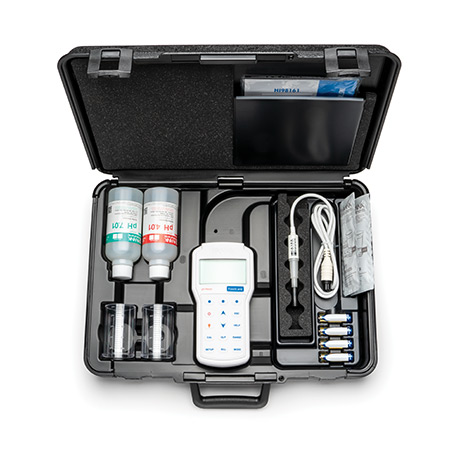
HI98161 is supplied with:
- FC2023 PVDF body pH electrode
- HI7004M pH 4.01 buffer solution (230 mL)
- HI7007M pH 7.01 buffer solution (230 mL)
- HI700641 electrode cleaning solution
- 100 mL plastic beaker (2)
- 5V AA batteries (4)
- HI92000 PC software
- HI920015 micro USB cable
- instruction manual with quick start guide
- instrument quality certificate
- HI720161 hard carrying case
HI99161
Portable Food
and Dairy pH Meter
and Dairy pH Meter
Designed to bring simplicity to pH testing of food products, the HI99161 pH Meter for Food and Dairy is designed for use in the food sector. The specialized probe features a PVDF body, conical tip, and open junction making it ideal for direct measurement of semisolid foods.
- ±0.02 pH accuracy
- Comes with all the necessary solutions and batteries- everything you need to get started measuring right away.
- Great for use in small food and dairy operations as well as for hobbyists.
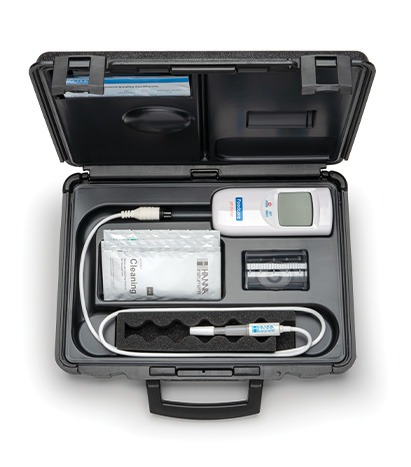
Each meter is supplied complete with:
- FC2023 preamplified pH/temperature probe with DIN connector and 1 m (3.3’) cable, conical tip
- pH 4.01 & 7.01 Buffer sachet
- HI700601 Electrode cleaning solution (2 sachets)
- 100 mL beaker (1 pc.)
- Alkaline batteries: 1.5V AAA (3 pcs.)
- Rugged carrying case
- Calibration certificate of meter
- Calibration certificate of probe
- Instruction manual


Author:
Tajana Mokrović
mag.nutr.
Tajana Mokrović
mag.nutr.

With Great Product Come Great Results
Service
Training
Rapair
Maintenance
Literature:
https://www.researchgate.net
Figoni, P. How Baking Works: Exploring The Fundamentals Of Baking Science. 3rd ed., John Wiley & Sons, Inc., 2011.
Kulp, K and Ponte, J.G . Handbook of Cereal Science and Technology, revised and expanded. 1 st ed., CRC Press, 2000.
https://www.researchgate.net
Figoni, P. How Baking Works: Exploring The Fundamentals Of Baking Science. 3rd ed., John Wiley & Sons, Inc., 2011.
Kulp, K and Ponte, J.G . Handbook of Cereal Science and Technology, revised and expanded. 1 st ed., CRC Press, 2000.

